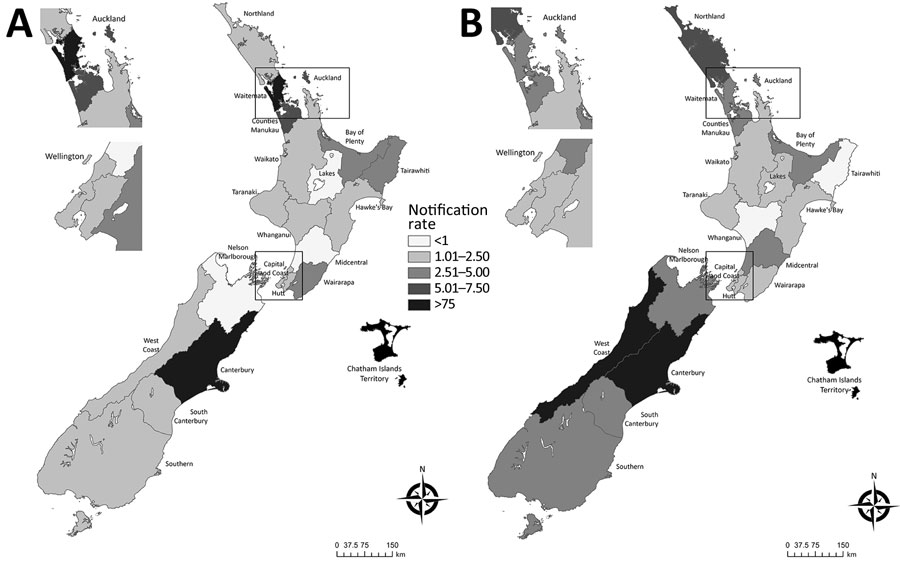Volume 29, Number 6—June 2023
Research
Increased Incidence of Legionellosis after Improved Diagnostic Methods, New Zealand, 2000–2020
Figure 5

Figure 5. Geographic pattern of mean legionellosis notification rates (cases/100,000 population) by New Zealand District Health Board in study of increased incidence of legionellosis after improved diagnostic methods, New Zealand, 2000–2020. A) 2000–2009; B) 2010–2020. Insets show enlarged areas around the cities of Auckland and Wellington. Maps generated in ArcGIS version 10.8 (https://www.arcgis.com/index.html) by using District Health Board data (Appendix).
Page created: April 12, 2023
Page updated: May 17, 2023
Page reviewed: May 17, 2023
The conclusions, findings, and opinions expressed by authors contributing to this journal do not necessarily reflect the official position of the U.S. Department of Health and Human Services, the Public Health Service, the Centers for Disease Control and Prevention, or the authors' affiliated institutions. Use of trade names is for identification only and does not imply endorsement by any of the groups named above.